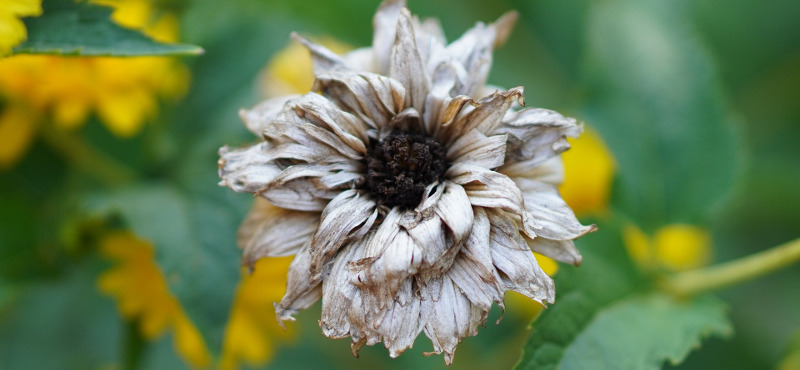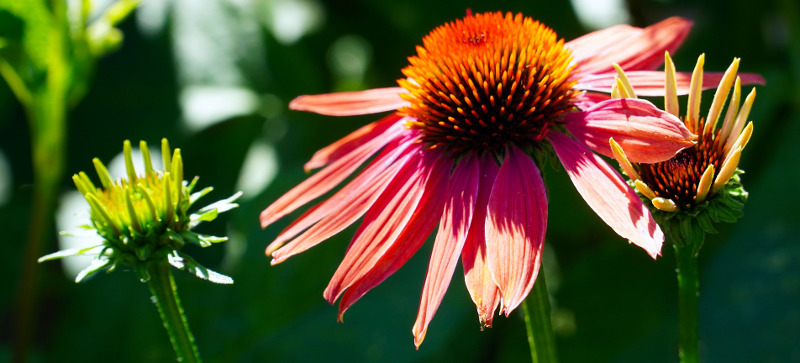Cutting back and pruning your coneflowers is an important part of a healthy care routine. When done right, pruning the plants can allow for a fresh start, lush regrowth and even more blooms in the summer. So, if you’re wondering if you can prune your coneflowers, the answer is yes! You can get more information about when, how and why to prune below. Follow the tips and get ready to see more beautiful blooms in the summer.

When to Prune Coneflowers
When is the best time to prune coneflowers? The answer to this can vary based on your garden goals and your approach to pruning. See some seasonal guidelines below to get a better idea about what time of year you should be taking the shears to your plant. Keep in mind that a little bit of pruning can also be happening throughout the growing season as well as when the plants are dormant.
Fall/Winter Pruning
If you like to have a tidy garden through the winter, then you can cut back your coneflowers after they go dormant in the late fall or early winter. Cutting back the dormant stalks and seed heads in the fall will also decrease the chance of the plant naturalizing, or spreading. Native prairie coneflower species (ie Ratibida columnifera and Ratibida pinnata), for instance, will spread easily via seed if you do not cut back the seed heads. If you have a small garden that you like to keep tidy, pruning in the fall is for you.
Spring Pruning
On the other hand, I often recommend waiting until spring to cut back native plants like coneflowers for a variety of reasons. First of all, these flowers provide important nutrition to your local bird population through the fall and winter months. If your garden is large enough to allow for a little naturalizing by native plants such as coneflowers, you’re doing your local wildlife a favor by allowing the seeds to stand. And, while some gardeners might see the spreading of plants as a downside, others see it as an upside – hey, free plants! Lastly, seed heads provide visual interest in the winter when most plants are dormant in your landscape.
In the end, whether you chose to prune your plants in the fall or spring is entirely up to you and what you want for your garden. And if, like me, you have a lot of coneflowers in your garden, you can choose to cut some back in the fall, and leave others for the spring.

Deadheading Coneflowers
Pruning coneflowers can be done in the summer too! However, pruning in the summer does not look the same as it does in the spring or fall. When you prune in the summer, it is more like what we call “dead heading,” as well as cutting for bouquets. You won’t want to cut your plant all the way back like you do in the fall or spring.

Deadheading your coneflowers in the summer entails cutting flowers that have ended their bloom. Deadheading is often done to keep the plant looking tidy, to prevent spreading by seed, and to encourage more blooms on the plant.
Did you know that many species of coneflowers bloom even more profusely when the flowers are cut? It’s true, cutting your flowers to enjoy indoors can often result in even more blooms throughout the summer. So get those scissors out, and enjoy those beautiful flowers inside and out.

How to Prune Coneflowers
Now we’ve come to the even more important question, “how do I properly cut back or prune my coneflowers?” The good news is that coneflowers are hardy plants, so it’s unlikely that a mistake in your pruning process will lead to the unfortunate demise of the plant. But it’s still important to know the proper way to prune them so that you can enjoy more blooms and healthy growth every year. Follow the steps below when you are cutting back your coneflowers.
Step 1 – Choose the time of year you prefer for pruning.
See information above about why you would choose to cut back your plants in the fall or the spring. Deadheading and cutting flowers in the summer is also an option.
Step 2 – Use sharp, clean pruning shears for cutting.
Make sure you have a sharp and clean pair of shears for pruning and cutting back your coneflowers.
Step 3 – Cut growth between 1” and 4” from the ground.
How far down you cut your coneflower plant will depend on the variety you have and how established it is. A big, established purple coneflower plant, for instance, can be cut back to 4” and come back in great shape. But a smaller variety, like prairie coneflowers, can be cut all the way back to 1”. Newer plants will more easily be cut back closer to the ground, as well.
If you’re deadheading your plants, cut off the spent bloom about ¼” above any new blooms on the same stem. Or cut the entire stem down to 4” from the ground if it’s completely done blooming.
Why Prune Coneflowers
Cutting back or pruning coneflowers is an important maintenance task because it rejuvenates the plant. It encourages new growth, increased blooms and keeps the plant from looking overgrown or untidy. Pruning is a necessary task for all gardeners because it keeps their plants healthy and gardens beautiful.

Coneflower Pruning Tips
- Cut off spent flowers to keep plant looking tidy, encourage new blooms and decrease spreading by seed.
- Cut flowers for bouquets to further encourage new blooms.
- Cut back in the fall to keep garden looking tidy and decrease spreading by seed.
- OR cut back in the spring to allow naturalizing, feed local birds and maintain some visual interest in your winter garden.
- Cut plants back to between 1-4” from the ground, depending on the type and maturity.
- Use your cuttings in your compost, which can be used to feed your coneflowers in the spring.
 |
Emily Reeves - Published 11-20-2020 |
